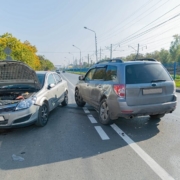Who is Liable for a Summer Camp Injury in California?
Summer camps offer California children exciting opportunities for growth, learning, and adventure. From mountain retreats to coastal surf camps, these programs promise memorable experiences. However, when an injury occurs, the joy can quickly turn to concern, and parents are often left wondering who is responsible. Navigating the aftermath of a summer camp injury involves understanding California’s laws regarding negligence, liability, and the duties owed by camp operators.
The Duty of Care for California Summer Camps
Summer camps, like many organizations that supervise children, owe a fundamental duty of care to the minors entrusted to them. This means they must take reasonable steps to ensure the safety and well-being of the campers. The precise scope of this duty can vary depending on the type of camp, the activities offered, and the age and capabilities of the children involved.
Reasonable Care Standard: Camps are generally expected to exercise the same level of care that a reasonably prudent camp would exercise under similar circumstances. This is not a guarantee against all accidents, but rather an obligation to prevent foreseeable harm.
Supervision: A primary aspect of a camp’s duty of care is adequate supervision. This includes:
- Appropriate Ratios: Ensuring a sufficient number of qualified staff members are present for the number of children and the nature of the activity.
- Qualified Staff: Employing counselors and activity leaders who are properly trained, background-checked, and capable of managing the group and specific risks.
- Active Monitoring: Staff should be actively observing children, especially during high-risk activities, rather than being distracted.
Safe Premises: Camps must maintain their facilities in a reasonably safe condition. This involves:
- Regular Inspections: Routinely checking equipment, play areas, cabins, and other facilities for hazards.
- Addressing Hazards: Promptly repairing or warning about dangerous conditions, such as broken equipment, uneven surfaces, or inadequate lighting.
- Securing Dangerous Areas: Restricting access to areas that pose a significant risk, such as maintenance sheds, bodies of water without supervision, or areas under construction.
Activity-Specific Safety: For specialized activities like swimming, rock climbing, archery, or horseback riding, camps have an elevated duty to implement specific safety protocols, provide appropriate equipment, and ensure instructors are properly certified and experienced.
When a Camp May Be Liable: Proving Negligence
To hold a summer camp liable for a child’s injury, it is generally necessary to prove negligence. Negligence occurs when a party’s failure to exercise reasonable care results in harm to another. The elements of a negligence claim typically include:
Duty: The camp owed a legal duty of care to the injured child. As discussed above, this duty is generally established by the camp-camper relationship.
Breach of Duty: The camp failed to meet that duty of care. This is the core of a negligence claim and involves demonstrating how the camp’s actions or inactions fell below the reasonable care standard. Examples of a breach might include:
- Insufficient staff supervision during a high-risk activity.
- Failure to repair a known dangerous condition on the premises.
- Allowing an unqualified staff member to lead an activity beyond their training.
- Failure to provide or ensure the use of appropriate safety equipment.
- Not following established safety protocols for an activity.
Causation: The camp’s breach of duty directly caused the child’s injury. There must be a clear link between the camp’s negligent act and the resulting harm. For example, if a child fell from a broken swing, the broken swing (breach of duty) directly led to the fall and injury.
Damages: The child suffered actual damages as a result of the injury. This can include medical expenses, pain and suffering, lost future earning capacity (in severe cases), and other quantifiable losses.
The Role of Waivers and Release Forms
Before a child attends summer camp, parents are almost always required to sign various forms, including waivers or release of liability forms. These documents are designed to protect the camp from lawsuits in the event of an injury. However, the enforceability of these waivers in California is not absolute, especially concerning injuries to minors.
- Waivers for Minor Children: In California, a parent generally cannot waive a child’s right to sue for personal injury caused by another party’s ordinary negligence. This means that even if a parent signs a waiver, it may not prevent a lawsuit if the child’s injury was caused by the camp’s failure to exercise reasonable care. The reasoning is that a parent cannot sign away a child’s fundamental right to be free from harm caused by negligence.
- Gross Negligence and Recklessness: Waivers typically do not protect a camp from liability for injuries caused by gross negligence, recklessness, or intentional misconduct. Gross negligence involves an extreme departure from the ordinary standard of care, indicating a conscious disregard for the safety of others.
- Express Assumption of Risk: Waivers may be more effective in situations where the injury arises from an inherent risk of a specific activity that the parent expressly acknowledged and assumed. For example, if a camp activity is inherently risky (like whitewater rafting) and the waiver clearly outlines those specific risks, it might offer some protection for injuries arising from those inherent dangers, assuming all safety precautions were met by the camp.
- Ambiguity and Scope: The language of the waiver itself is rigorously scrutinized by courts. If the waiver is ambiguously worded or does not clearly and conspicuously explain the risks being waived, it may be deemed unenforceable. The waiver’s scope is also important; it only applies to the risks specifically outlined within the document.
It is always important to have legal guidance review any waiver signed, particularly after an injury, to determine its enforceability in the specific circumstances.
Common Causes of Summer Camp Injuries
Injuries at summer camps can stem from a variety of sources. Identifying the cause is a key step in determining liability. Some common scenarios include:
Inadequate Supervision
- Children wandering off and getting lost or injured.
- Fights or bullying among campers leading to injury when staff are not present or attentive.
- Injuries during unstructured play due to lack of oversight.
Defective or Unsafe Equipment
- Playground equipment that is broken, poorly maintained, or not age-appropriate.
- Sports equipment that is damaged or used improperly.
- Camping gear that is faulty, leading to accidents (e.g., collapsed tents, malfunctioning stoves).
Unsafe Premises
- Slippery surfaces (wet floors, icy patches, unsecured rugs).
- Uneven terrain or hidden obstacles.
- Poor lighting in dormitories, pathways, or activity areas.
- Unsecured entry points allowing unauthorized access.
Negligent Activity Planning or Execution
- Activities not suited for the age or skill level of the participants.
- Lack of proper instruction or demonstration before an activity.
- Failure to provide or enforce the use of safety equipment (helmets, life vests).
- Overcrowding during activities.
Food Poisoning or Allergic Reactions
- Failure to properly store or prepare food.
- Cross-contamination.
- Not adequately addressing documented food allergies, leading to severe reactions.
Medical Negligence
- Camp medical staff failing to provide appropriate medical care for an illness or injury.
- Misdiagnosing a condition.
- Administering incorrect medication or dosage.
- Delaying necessary emergency medical attention.
Staff Misconduct
- Intentional harm or abuse by a camp staff member.
- Reckless behavior by staff that endangers campers.
Potential Liable Parties Beyond the Camp Operator
While the camp operator is often the primary focus in an injury claim, other parties may also bear some responsibility, depending on the circumstances.
- Individual Staff Members: If an injury is directly caused by the egregious negligence or intentional misconduct of a specific counselor, instructor, or staff member, that individual might be named in a lawsuit. However, typically, the camp itself would be held responsible for the actions of its employees under the principle of “respondeat superior” (let the master answer).
- Third-Party Vendors: Many camps utilize third-party vendors for certain activities (e.g., zip-lining companies, bus transportation services, specialized sports instructors). If the injury occurs due to the negligence of one of these third parties, they could be held directly liable.
- Equipment Manufacturers: If a defect in a piece of equipment (e.g., a faulty climbing harness, a broken playground swing) directly caused the injury, the manufacturer of that equipment could be subject to a product liability claim.
- Property Owners: If the camp leases its facilities, the property owner might have some liability if the injury stemmed from a dangerous condition on the premises that the owner was responsible for maintaining or knew about.
Steps to Take After a Summer Camp Injury
If your child sustains an injury at a summer camp in California, taking immediate and systematic steps can help protect your child’s rights and any potential claim.
Seek Immediate Medical Attention: Your child’s health is the absolute priority. Ensure they receive prompt and appropriate medical care, even if the injury initially seems minor. Some injuries may not show their full extent until later.
Notify the Camp Management: Inform the camp director or responsible administrator of the injury as soon as possible. Obtain a written incident report if one is created, and keep a copy for your records.
Document Everything:
- Photos and Videos: Take pictures or videos of the injury, the specific location where it occurred, any defective equipment, or hazardous conditions.
- Witness Information: Collect contact information from any witnesses to the incident, including other campers (if appropriate and with parental permission), staff members, or visitors.
- Medical Records: Keep detailed records of all medical treatment, diagnoses, medications, and expenses.
- Correspondence: Document all communications with the camp, including dates, times, names of individuals spoken to, and summaries of discussions.
Avoid Discussing Fault or Accepting Offers: Do not make statements admitting fault or minimizing the injury. Do not accept any quick settlement offers from the camp or its insurance company without first consulting with legal guidance.
Preserve Evidence: Do not allow anyone to dispose of or alter any items related to the injury, such as damaged equipment or personal belongings involved in the incident.
Consult with Legal Guidance: Contacting a knowledgeable attorney promptly is important. An attorney can help you understand your rights, evaluate the strength of your potential claim, navigate complex legal issues like waivers, and ensure all necessary evidence is preserved.
Damages Recoverable in a Summer Camp Injury Claim
If a summer camp is found liable for your child’s injury, you may be able to recover various types of damages. These damages aim to compensate the child and their family for the losses incurred due to the injury.
Economic Damages: These are quantifiable financial losses.
- Medical Expenses: Past and future costs of medical treatment, including doctor visits, hospital stays, surgeries, medications, physical therapy, and rehabilitation.
- Lost Wages (for Parents): If a parent had to take time off work to care for the injured child.
- Special Educational Needs: Costs associated with any educational support or accommodations required due to the injury.
- Travel Expenses: Costs incurred for travel to medical appointments.
Non-Economic Damages: These are more subjective losses that do not have a direct financial cost but significantly impact the child’s quality of life.
- Pain and Suffering: Compensation for the physical pain and emotional distress endured by the child due to the injury.
- Emotional Trauma: Psychological impacts, such as anxiety, depression, or post-traumatic stress disorder.
- Loss of Enjoyment of Life: If the injury prevents the child from participating in activities they once enjoyed, like sports, hobbies, or social events.
- Disfigurement or Permanent Impairment: Compensation for any lasting physical changes or functional limitations.
Importance of Professional Legal Assistance
Dealing with a child’s injury is emotionally taxing, and navigating the legal complexities simultaneously can be overwhelming. A seasoned personal injury attorney can provide invaluable support and representation throughout the process.
An attorney can:
- Investigate the incident thoroughly to determine liability.
- Gather and preserve critical evidence, including witness statements, incident reports, and surveillance footage.
- Obtain and analyze medical records to fully document the extent of the injuries and their impact.
- Negotiate with the camp’s insurance company on your behalf, aiming for a fair settlement.
- Advise you on the enforceability of any signed waivers.
- File a lawsuit and represent your child’s interests in court if a fair settlement cannot be reached.
- Ensure compliance with all legal deadlines and procedures, such as California’s statute of limitations for personal injury claims.
Protecting your child’s well-being is the top priority, and securing appropriate compensation for their injuries can help ensure they receive the care and support they need for recovery.
Child Injured at a California Summer Camp? Contact Garmo & Garmo Today
When a summer adventure turns into an unexpected injury, the path forward can seem daunting. If your child has been injured at a summer camp in California, understanding your legal options is paramount. The team at Garmo & Garmo is dedicated to helping families navigate these challenging situations. We are committed to advocating for your child’s rights and pursuing the compensation they deserve. Contact us today for a consultation to discuss your specific circumstances and learn how we can assist you.












